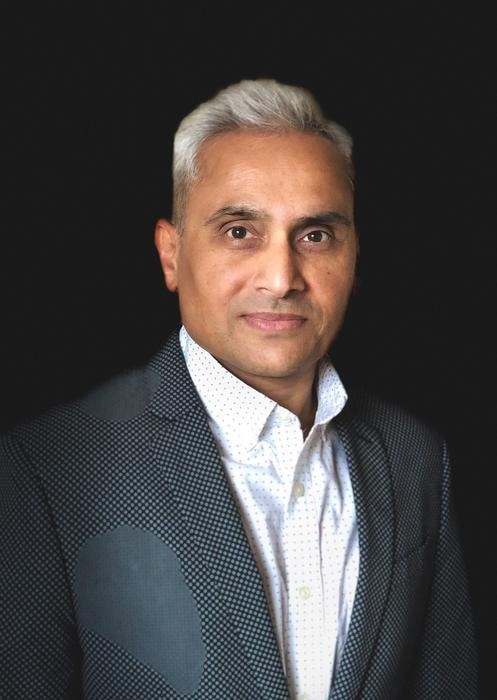Reviewed by Danielle Ellis, B.Sc.Oct 1 2024
Researchers at the University of Ottawa published a study in ACS Nano that challenges the current understanding of light and materials.
 “Our research opens doors to next-generation plasmonic-based spectroscopy and sensing via enhanced optical metrology.” Ravi Bhardwaj— Professor, Department of Physics at the University of Ottawa. Image Credit: University of Ottawa
“Our research opens doors to next-generation plasmonic-based spectroscopy and sensing via enhanced optical metrology.” Ravi Bhardwaj— Professor, Department of Physics at the University of Ottawa. Image Credit: University of Ottawa
They discovered that depending on the handedness of the light wavefront, engineered achiral (symmetric) materials, also known as achiral plasmonic metasurfaces, can absorb light in different ways. This was unexpected because it had long been believed that these materials did not exhibit such selective absorption and were neutral to all optical probes.
The study was led by PhD student Ashish Jain and professor of physics at the University of Ottawa Ravi Bhardwaj. It was carried out over the course of the previous year at uOttawa's Advanced Research Complex (ARC) with assistance from research engineer Howard Northfield and colleagues Ebrahim Karimi, associate professor of physics and holder of the Canada Research Chair in Structured Light, and Pierre Berini, professor of electrical engineering and holder of the University Research Chair in Surface Plasmon Photonics.
The team utilized a special light tool created by Professor Karimi's Structural Quantum Optics (SQO) group to fabricate the necessary structures with the assistance of Howard Northfield and Professor Berini. Their findings revealed that selective absorption occurs due to interactions between various parts of the light and the material.
For decades, we believed that these materials could not show any difference in how they absorb polarized light. But our research shows that by using a special kind of twisted light, we can control and tune this absorption up to 50%.
Ravi Bhardwaj, Professor, Department of Physics, University of Ottawa
Key Points from the Study Include:
- Breaking the old belief: The team demonstrated that achiral structures can absorb light in different ways, challenging long-held beliefs
- Precise control: They discovered ways to precisely control this absorption, which could be useful in applications such as optical switches
- Improved efficiency: Their unique twisted light increased light absorption efficiency in these materials
- Easier fabrication: Achiral structures are easier to fabricate, which could result in better and more functional optical devices
- New insights: The findings improve the comprehension of how light interacts with these materials
Professor Bhardwaj added, “Our research not only debunks the myth that dichroism doesn’t exist in achiral structures but also opens doors to next-generation plasmonic-based spectroscopy and sensing via enhanced optical metrology.” This work promises significant advancements in optical devices, such as sensors and switches.”
Ashish Jain added, “This discovery is important because it shows that even symmetrical materials can have special light-absorbing properties, opening up new possibilities for advanced sensing and measurement technologies.”
Journal Reference:
Jain, A., et. al. (2024) Selective and Tunable Absorption of Twisted Light in Achiral and Chiral Plasmonic Metasurfaces. ACS Nano. doi.org/10.1021/acsnano.4c06983